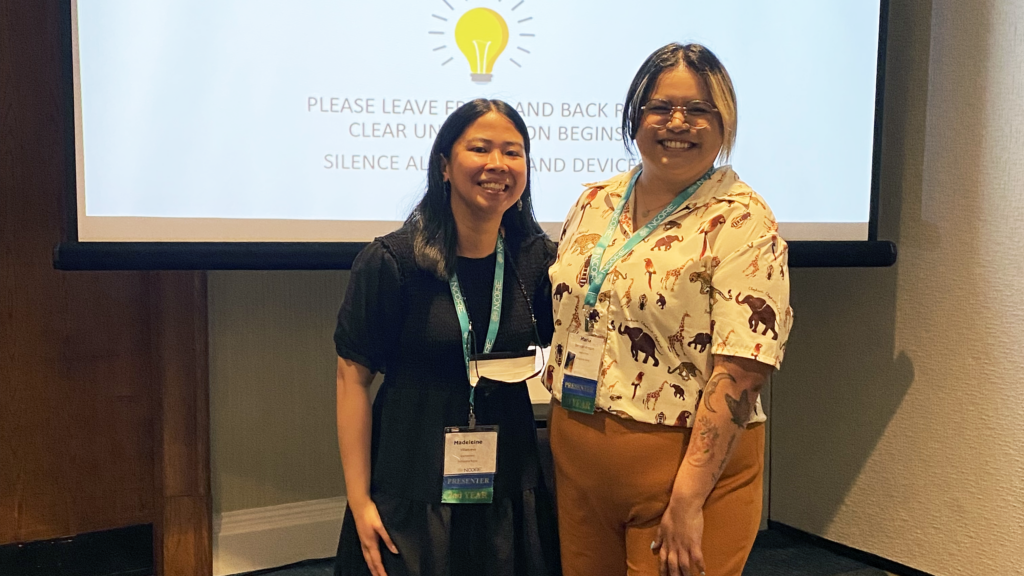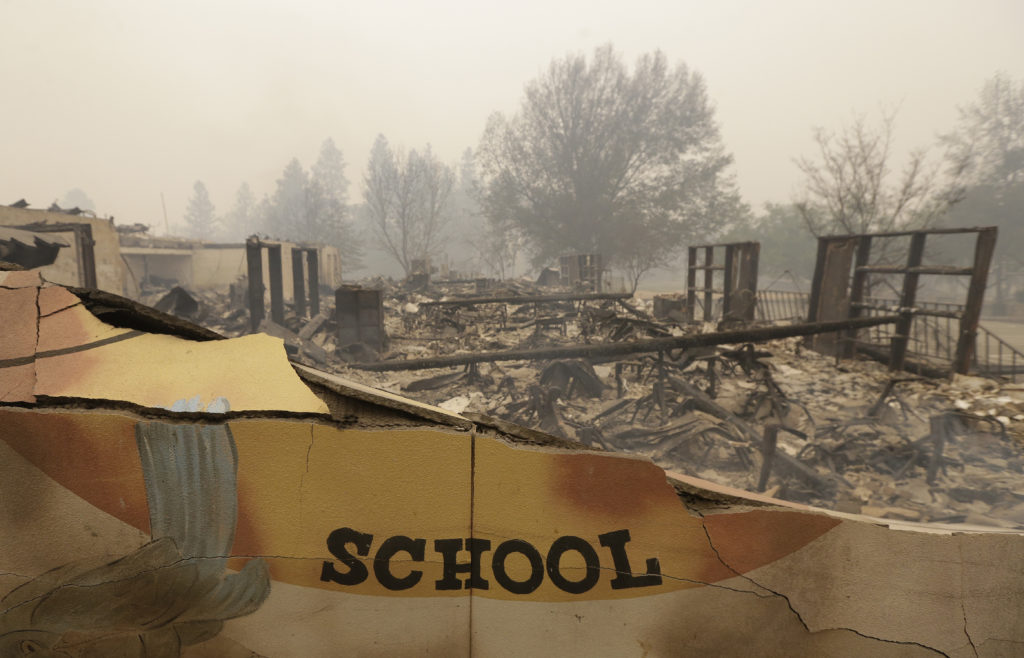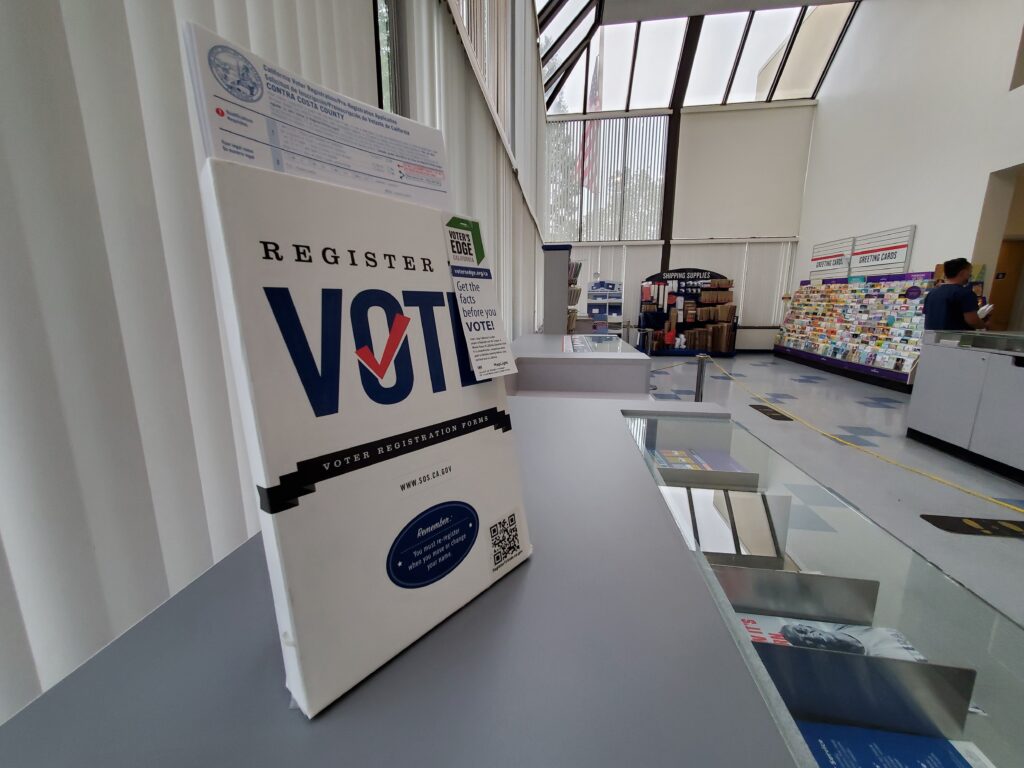
Madeleine Villanueva, higher education manager of Immigrants Rising and Maria Barragan, director of undocumented student support services at Loyola Marymount University.
Credit: Courtesy of Immigrants Rising
Iveth Díaz has spent much of her career helping immigrant students living in the U.S. without permanent legal status navigate college. But when her own application to renew her work permit and temporary protection from deportation was delayed because of backlogs, she had to resign from her job for three months.
“It was extremely stressful. It was a time when I suffered from anxiety and depression, which is unfortunately very common within our community,” Díaz said.
Díaz and other college and university employees with work permits and protection under the Deferred Action for Childhood Arrivals, or DACA, program are calling on universities to do more to help them prepare for alternative employment plans in case the program ends. Some proposals include helping employees become independent consultants, preparing a severance package or sponsoring work visas.
DACA offers temporary protection from deportation and permission to work for about 579,000 young people who were brought to the U.S. as children and graduated from high school, completed a GED or are veterans of the U.S. military. Every two years, recipients must apply for renewal. But the program could end at any time. It was found to be illegal by a federal judge in Texas, and that case will likely end up in the Supreme Court.
The program, launched during the Obama administration, has long been associated with high school and college students, but most recipients are now working adults. The U.S. Citizenship and Immigration Services has not accepted new applications since 2017, making the youngest DACA recipients currently 21 years old, and the oldest, now 42.
“The DACA generation are not kids anymore,” said Madeleine Villanueva, higher education manager of Immigrants Rising, an organization based in San Francisco that helps undocumented people achieve career and educational goals and published a guide for colleges and universities to support undocumented employees. “A lot of us are in our 30s and 40s. We’re doing this work so that the future generation of undocumented students doesn’t have such a hard time like we did when we were going to school.”
Hundreds of faculty and staff at California colleges and universities are DACA recipients, although the exact total is unclear. According to the Presidents’ Alliance on Higher Education and Immigration’s Higher Ed Immigration Portal, there are about 9,211 recipients working in education in California, from elementary school to college. The University of California estimates it has more than 400 employee recipients, some of them students. Spokespersons for the California State University and California Community Colleges said they did not have data on how many employees are temporarily protected from deportation.
Díaz worked for more than eight years at CSU San Bernardino as an administrative support coordinator for graduate researchers and as an admissions counselor. She now leads a program for students at Cerritos College who do not have permanent legal immigration status. As a fellow at Immigrants Rising, she conducted a survey of about 65 employees of California colleges and universities who at one time were living in the U.S. without permission, most of whom now have DACA protections. The employees included faculty, counselors, researchers and financial aid and admissions workers.
She said most respondents said their colleges and universities have not prepared for what to do for their employees if the program ends.
“Are we waiting until the program is canceled altogether, or are institutions being proactive in creating ways to retain their employees?” Díaz said. “I found that 70% of respondents stated that their institutions have not even brought it up, have not even had a conversation to their knowledge about what a response plan would be, which is really worrisome.”
Laura Bohórquez García, the director of the AB 540 and Undocumented Student Center at UC Davis, decided to start her own business, Inner Work Collective Freedom, to employ herself if the program ends and she loses her work permit.
“I’m like, OK, how do I prepare? Because I don’t feel like the university would be ready to jump in,” Bohórquez García said.
In addition to plans in case DACA ends, concerned university employees and advocates recommended that universities offer more mental health benefits and that supervisors check in on their employees’ mental health.
“You have to check in with the students, but sometimes no one is checking in with you. How can we help others if we can’t even advocate for ourselves?”
Eric Yang
Many recipients working in colleges and universities are employed in positions dedicated to supporting immigrant students on their campuses, helping them get legal services or mental health counseling. But many of these positions are part-time and don’t offer health benefits, which are crucial when living with the uncertainty of losing temporary protection from deportation, advocates said.
“So much of what they’re doing and the fires they’re turning off when it comes to students, it impacts them as well,” said Luz Bertadillo Rodríguez, director of campus engagement at the Presidents’ Alliance on Higher Education and Immigration, a group of college and university leaders dedicated to increasing public understanding of how immigration policies and practices impact students. “The constant word or feeling I hear when there’s a new DACA update is, ‘I’m exhausted.’ They’re just like, ‘I’m tired of living my life two years at a time and then even that not being certain.’”
Whenever a new court decision comes out about the program, employees in the immigrant resource centers often find themselves holding workshops or trainings to help explain the decision to students, yet they are also processing the decision themselves.
“You have to check in with the students, but sometimes no one is checking in with you,” said Eric Yang, a recipient who has worked with immigrant students at two different California universities. “How can we help others if we can’t even advocate for ourselves?”
University of California officials are currently examining ways to support employees if the temporary deportation protections are terminated, according to UC Office of the President spokesperson Stett Holbrook. He added that the UC Immigrant Legal Services Center offered immigration consultation workshops for recipient employees last summer, “many of which identified eligibility for employment, family or humanitarian relief.”
RESOURCES FOR UNDOCUMENTED COLLEGE EMPLOYEES
“The University of California has a long record of support for DACA recipients, and we will continue to support our students, staff and faculty regardless of their immigration status,” Holbrook said.
The University of California is also currently considering a proposal to allow the university to hire students who do not have work permits under DACA. A coalition of immigrant students and allies, including legal scholars at UCLA and elsewhere, have argued that a federal law barring the hiring of immigrants living in the country without permission doesn’t apply to state entities.
California State University and California Community Colleges both offer free legal services to employees who have temporary work permits. However, advocates said many faculty and staff are unaware that these services are not just for students.
Melissa Villarin, spokesperson for the California Community Colleges Chancellor’s Office, said the community colleges have also recently included resources for staff and faculty during the annual Undocumented Student Action Week.
Díaz also recommended more training for university staff about DACA recipients. She said survey respondents said there was a lack of awareness or understanding among other staff and faculty about their colleagues who have temporary protection under the program.
“There was just no knowledge by institutions of higher ed about even having undocumented staff and faculty on campus,” Díaz said.
She said lack of awareness can lead to insensitivity. At one point, for example, she said a human resources director asked her why she didn’t just fix her status or apply for a green card, not understanding that Díaz, like most immigrants who entered or stayed in the U.S. without permission, didn’t have a way to apply for a green card without leaving the country and possibly having to stay out for up to 10 years.
Yang said universities should do more to highlight the stories of staff who are covered by the Deferred Action for Childhood Arrivals program “so that people in the public know that there are professional staff who are also potentially without any protection or support.”
Despite the challenges these immigrants face, Bertadillo Rodríguez said they should be commended for their work. “They’re very involved in the students’ lives because they’re able to create such strong bonds with the students,” she said. “They’re some of the most exceptional and brilliant practitioners that I’ve come across in higher education.”










